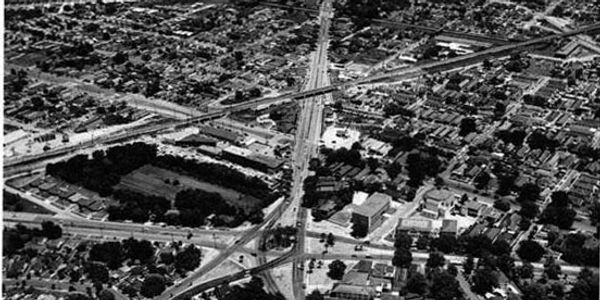Desaix area history

Our neighborhood got its name from Louis Charles Antoine Desaix de Veygoux, who was a General in Napoleon Bonaparte's army. Gen. Desaix was called “Just Sultan” by the Egyptians for his bravery in the Battle of the Pyramids in 1798. Gen. Desaix saved the day at the Battle of Marengo, when he said to Napoleon, “This battle is completely lost, but it is only two o’clock, there is time to win another.” The victory enhanced Napoleon’s political clout in Paris, but Gen. Desaix was a casualty. Napoleon erected monuments to his memory on the Place de Victoires and Place Dauphine in Paris.
Gen. Desaix’s name is included on the Arc de Triomphe and there is a huge statue of Desaix on the Place de Jaude in Clermont-Ferrand, France.

Bayou St. John and the area around it were significant trading routes to the City of New Orleans when most of the city was located in what we now call the French Quarter. There were portages at the area where Desaix Blvd. and Grand Route St. John meet the Bayou. In the early 1800s, it is said that the original “Dr. John” practiced a form of voodoo in this vicinity. His real name was John Montenet, a free man of color.
Alexander Milne, a Scotsman, arrived in New Orleans in 1790 and established hardware and brickmaking businesses. Milne bought large tracts of land along Bayou St. John and on the lakefront, believing that the swampland would one day be valuable. When he died in the mid 1800s, Andrew Milne bequeathed money and property to establish the Milne Asylums for orphan boys and another for girls. A map from 1883 shows a misspelled Dessaix Place (now Desaix Circle) as a square! The map below shows the Desaix area before the construction of the Circle as it is today.
In the early 1900s, Kate and Jane Gordon were noted activists for women, animals and charitable causes, though they were somewhat controversial. They promoted and ran the Milne Girls home which cared for mentally disabled women until Katrina. The property has been leveled and is currently for sale. The Gordon sisters built the two larger, Victorian homes on Desaix Blvd.
The area that is currently occupied by the LSU Dental School was once an army base. The surrounding area, and many of our houses, were built before and after World War II as military support housing. Our neighborhood also was the birth place for the Krewe of Endymion, originally named the “Gentilly Carnival Club”. The krewe’s founder, Ed Muniz, grew up on D’Abadie Street, lived on Desaix after he married, and started a radio station on Gentilly Blvd. near the track. On February 4, 1967, with 155 men aboard 16 floats, the Krewe of Endymion started its very first parade, at Trafalgar Street in front of E.D. White (now Langston Hughes) school. Endymion later moved its starting place to City Park and Orleans Avenue as the krewe grew.

Today, at the Desaix Circle is a nineteen feet high green sculpture with a mélange of Afro-Caribbean icons, entitled “Spirit House”. It was crafted by the late John T. Scott and fellow sculptor Martin Payton to honor the city’s African American population and their forebears. It is “an altar of memory celebrating the dreams and aspirations of those whose hands and passions made this city what it is today”.

The old bridge over Bayou St. John at DeSaix Blvd shown after its completion with City Councilman Walter M. Duffourc, c. 1940s to 1950s. City Hall Slides Collection, Louisiana Division, New Orleans Public Library

New Orleans Mayor Latoya Cantrell, Councilmember Eugene Green, and DANA President Hannah Ligon spoke at the DeSaix Boulevard Bridge reopening and ribbon-cutting in December 2024 to celebrate the completion of a $6 million project funded by the City of New Orleans bond program.
The infrastructure improvements to the bridge, which crosses Bayou St. John, not only provided complete bridge reconstruction and new lighting, it also included upgrades along the 1700 and 1800 blocks of Moss Street, and provided protected pedestrian and bike pathways on each side of the bridge.

An anchor between DeSaix Area, Faubourg St. John, and the Fair Grounds Triangle neighborhood is The Fair Grounds Race Course, a historic thoroughbred racetrack and racino. It was established in 1837 and is known for its rich history and significance in the sport of horse racing. The track has been a staple of southern thoroughbred racing since 1872 and is the third oldest racetrack in the United States. It has a storied history, having been the site of the first thoroughbred race in 1853 and has hosted many notable figures and events throughout its history. The Fair Grounds has survived numerous challenges, including a fire in 1993 and Hurricane Katrina in 2005, and continue to be a vibrant part of New Orleans' culture and heritage, acting as the host for the New Orleans Jazz & Heritage Festival each year.